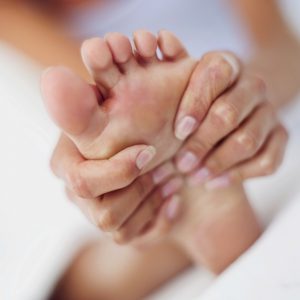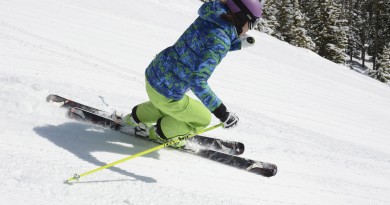The Agony Of Feet
If your feet are killing after a day on the slopes, don’t despair. There are some easy fixes.
My feet hurt.” Anyone who has spent time on the hill has probably said this at some time. While foot issues can sometimes end a ski day early, there are solutions. As a bootfitter and a ski instructor, here are four common problems I often hear, and some ideas about how to fix them.
My feet are freezing!
When winter gets serious, you need to be ready. But on days when the mercury dips low, a thicker sock isn’t the answer. In fact, in a well-fit boot, a thicker sock will limit blood flow and make your feet colder. It’s best to use a pair of socks with little to no padding.
 The most common defense against cold toes is disposable toe heaters. Peel the package open, let them get warm, and stick them across the top of your toes. Just be careful as you slide your boot on to not wrinkle the heater.
The most common defense against cold toes is disposable toe heaters. Peel the package open, let them get warm, and stick them across the top of your toes. Just be careful as you slide your boot on to not wrinkle the heater.
If you need heat more than just a few times a season, or if your boots are just too tight, try a heating system like Hotronics. This involves installing a super flat disc on your footbed, under your toes with a wire running up to the cuff of the boot, where there is a holder for a rechargeable battery. You can choose how much heat you want, and the warmth will last all day. Hotronics also now makes a heated sock.
One last solution to fight the cold is a boot glove. This is an insulating neoprene cover that goes over your boots (not so good under a snowboard strap, so usually for ski boots) and helps keep out the cold, and keep you going longer on those cold days.
What’s growing on my foot?
Everyone’s foot is a little different, and it’s not uncommon to have a little bit of a bunion—a bony, protruding bump—on the big toe side or a tailor’s bunion on the little toe side, or maybe a knob on your heel, or on top of your foot. Bunions are caused by wearing tight shoes, and ski boots can accentuate them and make them painful. Luckily, bunions can be accommodated by a good boot fitter. If you are feeling excessive pressure or pain in any one of these spots, there are a number of solutions. A bootfitter can modify the liner of the boot for some space or even modify the hard shell of the boot. Many serious skiers look for a snug-fitting boot, and the closer the fit, the more likely it is you will need the boot modified for your foot. Most shops include this work with the boot purchase, and if not, the slight cost for modifications is well worth it.
I keep losing my toenails…
Lost toenails are nearly inevitable rites of passage for many lifelong skiers. But it doesn’t have to be that way. Identifying a toe issue early and making adjustments will keep you from losing a toenail in the shower. There are two main causes of toe pressure: boots too long, or boots too short. Since 86 percent of all skiers are in a boot at least one size too big, I’ll start with that one. When putting your foot in the shell of your ski boot, without the liner, there should only be a one- or two-finger width of room behind your heel when you toes are gently touching the front of the boot (about 1 or 1.5 cm of length). While you may be okay with a little more, if there is ever more than 2.5 cm of room, then your boot is too long.
When a boot is too long, you can generate “ramming speed” as your toes hit the end of the boot. While things can be done to snug up a boot, none of the options are very good, and I would usually say just get a shorter boot. If the boot is too short, then a bootfitter can stretch or punch out the shell to make the toes comfortable. Bootfitters are better able to make space in boots, than to take space away.
My foot is just so sore!
One of the easiest and best ways to make a ski or snowboard boot comfortable is by using a footbed. Not having a proper footbed or orthotic is the most common cause of general foot pain, fatigue, or cramping. A very small percentage of skiers and riders understand the difference between the stock insole that comes with a boot and a functional footbed. While sometimes a company will try to dress up the stock insole that comes in the boot, boots don’t come with orthotics. That’s because manufacturers don’t know what your arch looks like. A functional footbed cannot be folded up in your hands as it needs to hold its shape when you put your weight on it.
The vast majority of boots I sell get some type of off-the-shelf footbed like Superfeet. They come in different arch sizes and widths, and can usually be matched to a foot well by a trained boot fitter. For the skiers and riders that have a less “out of the box” arch, a custom-built footbed can fit anyone if built correctly. A “trim to fit” footbed off the shelf will run about $45, and a custom one will be about $150. Almost every serious slider should have some type of footbed.
While these four complaints are the common issues I run across as a bootfitter, this is by no means an all-inclusive list. Everyone’s feet are unique and sometimes the bootfitting issues are too. If you are going to spend serious time on the hill, you should get to know your local boot pro, and make sure you have help when your feet start barking at you! n
Doug Stewart is a bootfitter at Skirack in Burlington and a PSIA examiner who teaches skiing at Stowe.



